Susan Kusel’s The Passover Guest:
A Visit with Illustrator Sean Rubin
 March 9th, 2021 by jules
March 9th, 2021 by jules
She could feel Passover in the air.”
(Click spread to enlarge)
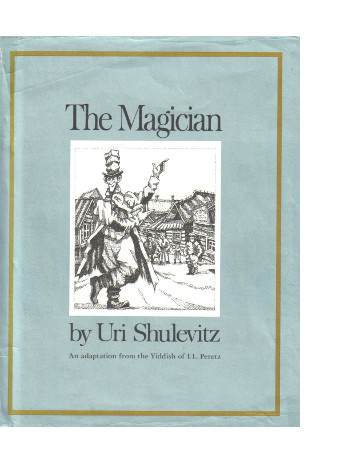 Susan Kusel’s The Passover Guest (Neal Porter Books/Holiday House, January 2021), illustrated by Sean Rubin, is a reimagining of the great Uri Shulevitz’s 1973 picture book adaptation, The Magician. (In 1904, Polish writer Isaac Leib Peretz orginally published “The Magician” as a short story in Yiddish.) And it is a breath of fresh air, infused with her love of Uri’s book, a childhood favorite of hers; Passover; Washington, D.C. and its cherry blossoms; and the Lincoln Memorial. The book’s richly colored tableaux are brought to us by Sean Rubin, who visits today to talk a bit about the process of illustrating this one.
Susan Kusel’s The Passover Guest (Neal Porter Books/Holiday House, January 2021), illustrated by Sean Rubin, is a reimagining of the great Uri Shulevitz’s 1973 picture book adaptation, The Magician. (In 1904, Polish writer Isaac Leib Peretz orginally published “The Magician” as a short story in Yiddish.) And it is a breath of fresh air, infused with her love of Uri’s book, a childhood favorite of hers; Passover; Washington, D.C. and its cherry blossoms; and the Lincoln Memorial. The book’s richly colored tableaux are brought to us by Sean Rubin, who visits today to talk a bit about the process of illustrating this one.
In the book’s opening spread, seen above, we meet Muriel, who loves Washington in the spring and can “feel Passover in the air.” But it’s 1933, and families everywhere are suffering. Her own family cannot buy all the food necessary for their Passover seder. As she walks home one evening and passes the Lincoln Memorial, she sees “a strange figure dressed in rags, juggling on the steps of the monument.” After she puts a penny in the hat at this feet, he tells her to hurry home.
Just as her family is about to head out to find another home in which to celebrate — “Every door will be open to us on Passover” — there is a knock at their door. The stranger is there — and works some magic. When the family turns around, they see a splendid seder plate at the table, and there is “even a beautiful cup of wine for Elijah.” Eventually, the rabbi and some townsfolk head to Muriel’s house. A large crowd grows, but the stranger is no longer there. They watch as “the wine poured itself and then the middle matzah broke in two and became the afikomen the children would look for later.” Muriel notices later that there isn’t a drop of wine in Elijah’s cup, though in all her excitement she failed to open the door for him. (In a closing author’s note, Kusel writes in remembering her childhood seders: “The most important part was setting out a full cup of wine for the prophet Elijah. I always waited to see if he appeared and took a drink from it. Every year I felt that I would see him if I only tried harder.”)
Rubin’s closing note professes his love for the work of Marc Chagall — and notes that Chagall created a “handful of admittedly bizarre illustrations for a 1917 Yiddish version of I. L. Peretz’s The Magician.” He adds: “If Susan Kusel’s adaptation began as a love letter to the writing of I. L. Peretz, my illustrations soon became a tribute to the paintings of Marc Chagall.” Indeed, this lively, engaging story nearly sparkles with color.
Here’s Sean to talk a bit about creating the illustrations. I thank him for sharing. …
Sean: These sculptures below are from the Franklin Delano Roosevelt Memorial in D.C. I think they’re actually based on period photos. These two I used are The Breadline and The Rural Couple, and both are by George Segal.
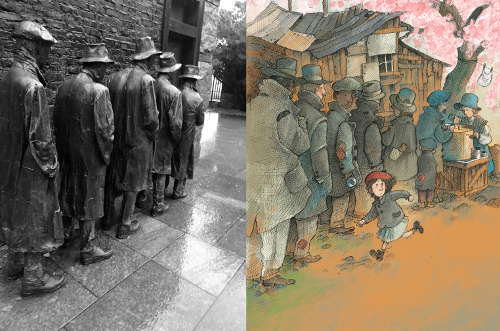

These are various stages of the magician’s spread:


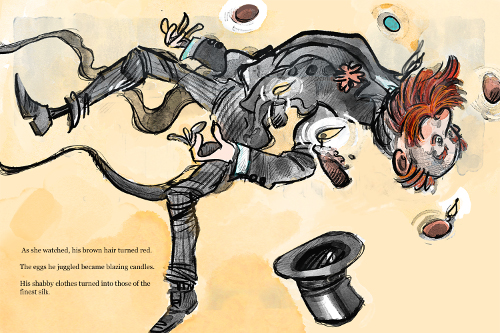
This is the final spread …
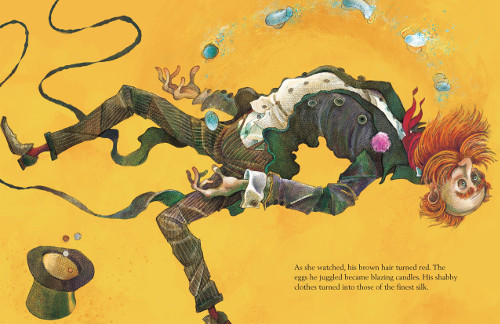
(Click spread to enlarge)
… which is an homage to Chagall’s Homage to Gogol:
This photo of the Lincoln Memorial is by Pete Souza — evidence the memorial does turn copper-colored, albeit early in the morning, haha. The idea was, because she’s putting the penny in the hat, you see Lincoln sort of in profile in a copper palette, as you can’t see the penny from that far away.


‘Are you sure?’ asked the man. ‘Perhaps you’d better hury home.'”
(Click spread to enlarge)
This spread where Muriel is running through her neighborhood …
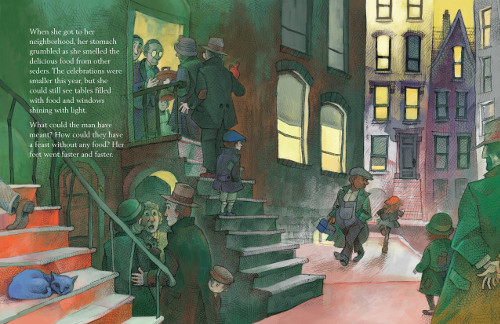
as she smelled the delicious food from other seders. …”
(Click spread to enlarge and read text in its entirety)
… borrows a color palette from I and the Village:
The model for the Magician is Gwen Ruehle. I thought having a very graceful woman pose for an old man character would give the character a more unearthly vibe:
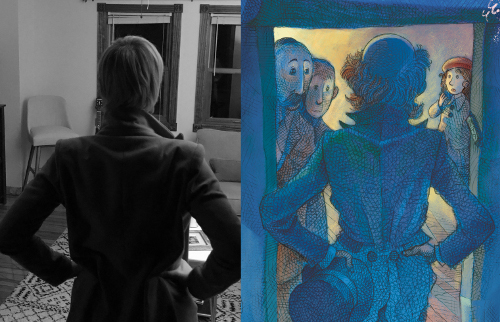
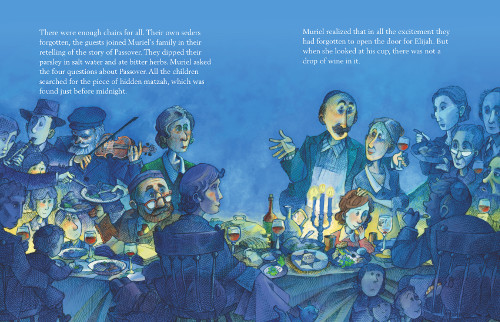
(Click spread to enlarge and read text in its entirety)
The synagogue in the book is Sixth & I in D.C.:

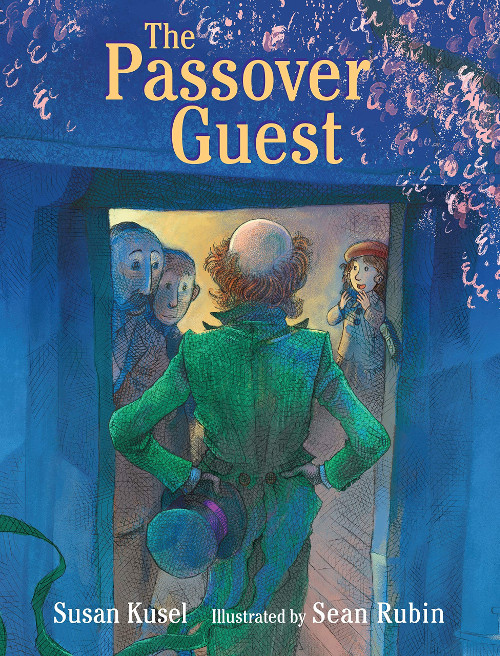
THE PASSOVER GUEST. Text copyright © 2021 by Susan Kusel. Illustrations copyright © 2021 by Sean Rubin. Final spreads reproduced by permission of the publisher, Neal Porter Books / Holiday House, New York. All other images reproduced by permission of Sean Rubin.
Chagall’s Homage to Gogol and I and the Village are in the public domain.
Photo of Sixth & I taken by Ken Kusel.
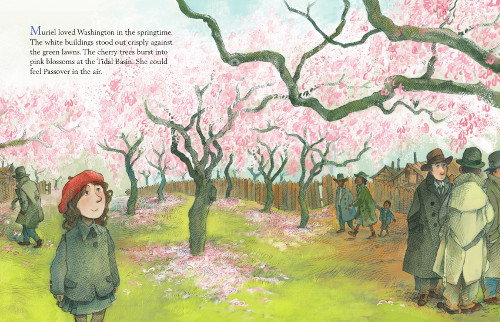

[…] some orange and periwinkle snuck in as well. I learned a ton about painting trees while working on The Passover Guest, and it was a joy to get back into that painting mindset. I love drawing, but there’s nothing […]